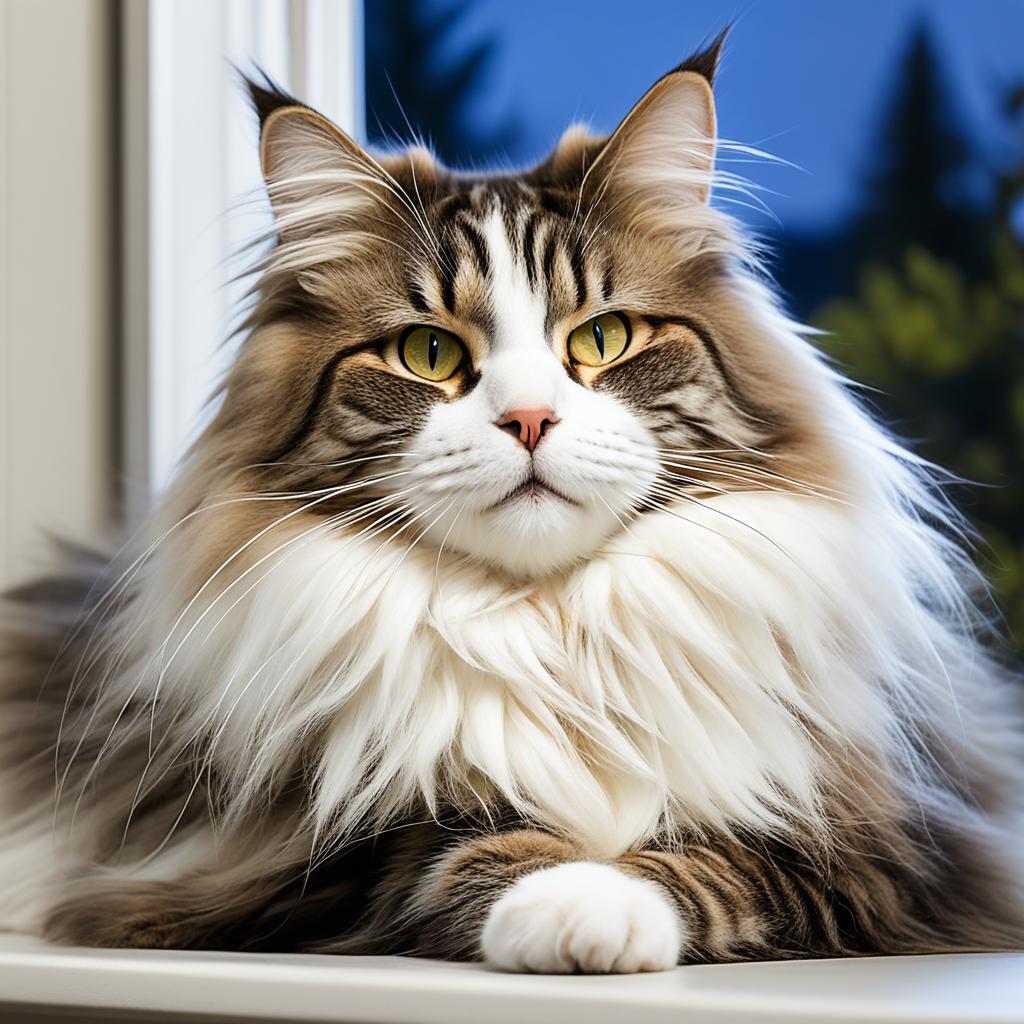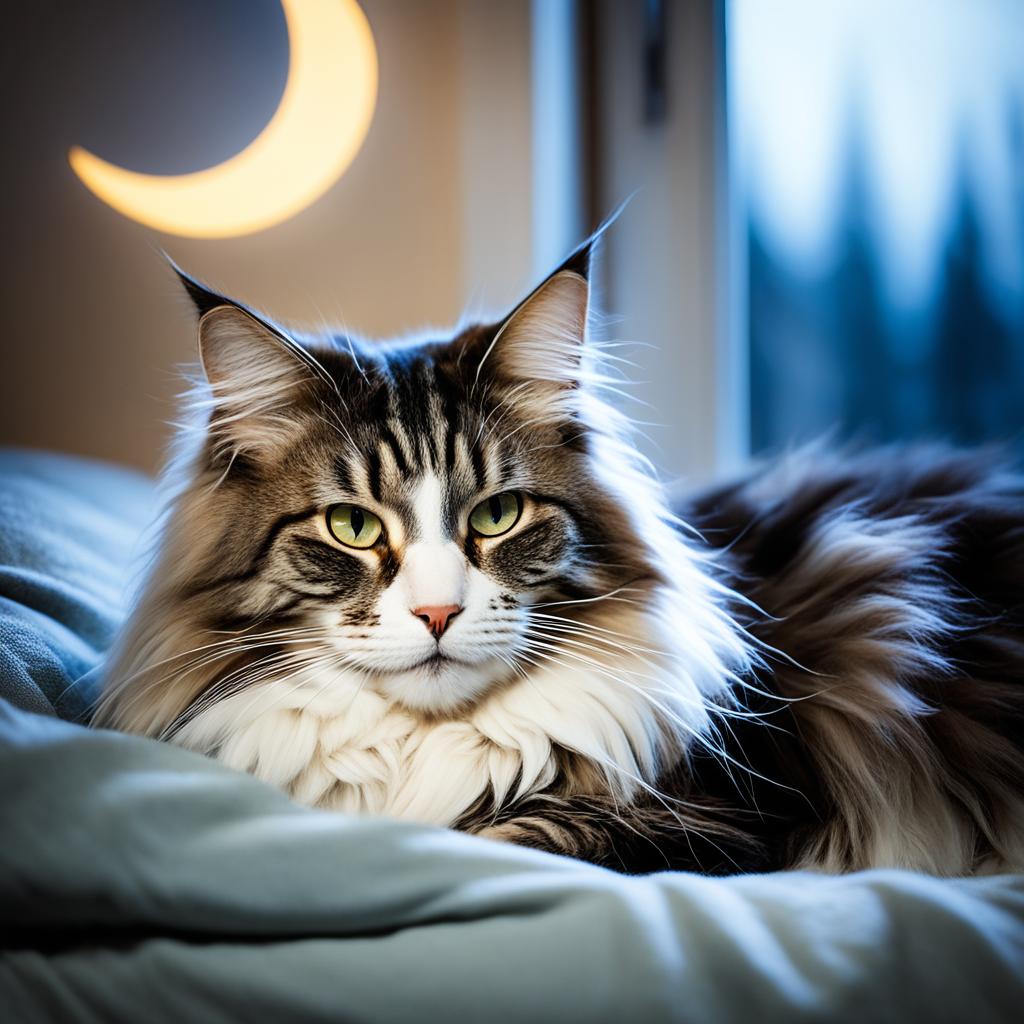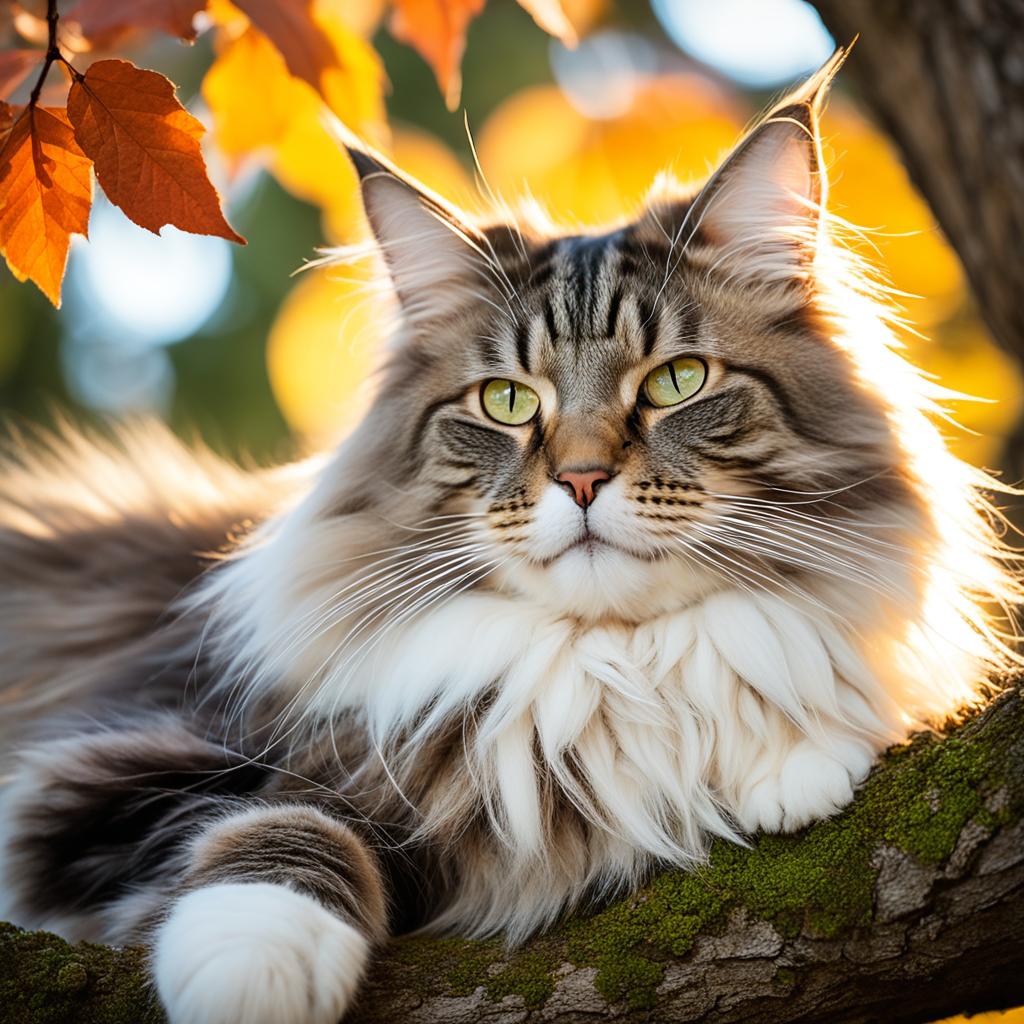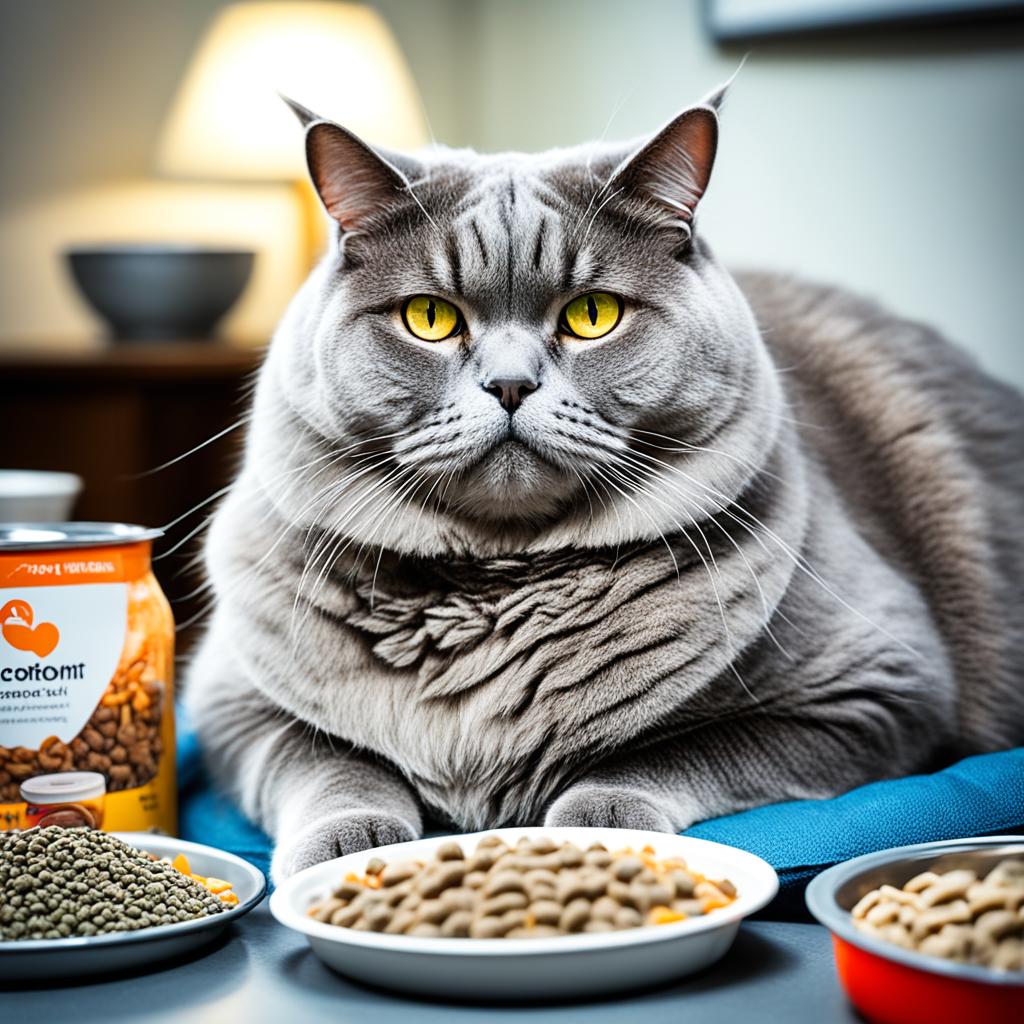Have you ever wondered why your Norwegian Forest Cat spends so much of its day sleeping? Although it may seem excessive, these extended nap sessions are actually quite normal and integral to their well-being. Norwegian Forest Cats, like many other felines, boast a penchant for lengthy sleep patterns, resting anywhere from 12 to 18 hours daily. This behavior isn’t just laziness; it’s an evolutionary trait meant to conserve energy for their active periods, much like their wild ancestors. By monitoring your cat’s sleep and providing a tranquil environment, you can ensure their health and happiness.
Key Takeaways
- Norwegian Forest Cats typically sleep 12 to 18 hours a day.
- These extensive sleep habits stem from an evolutionary need to conserve energy.
- Kittens and elderly cats may sleep even longer due to their unique energy needs.
- Sudden changes in sleep patterns can signal underlying health issues.
- Creating a peaceful sleeping environment supports your cat’s rest and well-being.
Understanding Norwegian Forest Cat Sleep Patterns

Did you know Norwegian Forest Cats have a penchant for sleep that can rival their wild ancestors? Indeed, one of the primary reasons for Norwegian Forest Cat sleeping a lot is their genetic predisposition, a trait shared with many predatory species like lions, who can snooze up to 20 hours a day. This extensive napping ensures these majestic felines are brimming with energy during their active hours.
These luxurious nap times aren’t just about beauty sleep. They have deep feline natural sleeping habits rooted in evolutionary behavior. Norwegian Forest Cats utilize this downtime to conserve energy, which is handy for their playful bursts and exploratory endeavors in their domestic territory. Even though there isn’t a strict sleep quota for these cats, any noticeable deviations from their usual patterns should be cause for an attentive parent to perk up and investigate potential health concerns.
Interestingly, Norwegian Forest Cats are known to adapt their sleep schedules to the household’s daily routines. Seeing these beautiful furballs adjusting their slumber to sync with your activities is a testament to their flexibility and attachment. Such synchronization can occasionally cause shifts in their sleeping patterns, reflecting just how much our routines impact their feline lives.
How Long Do Norwegian Forest Cats Sleep?

When it comes to Norwegian Forest Cat sleep behavior, you’re likely to find that these graceful cats favor a significant amount of shut-eye. Typically, these felines clock anywhere from 12 to 18 hours of sleep each day.
The amount they sleep can vary greatly depending on their stage in life. Kittens require extra snooze time for growth and development, whereas senior cats often enjoy additional rest due to their lower energy levels. It’s a fascinating blend of catnap and REM sleep that they experience, adding layers to their sleepy demeanor.
A typical sleep cycle for a Norwegian Forest Cat includes light sleep where they remain semi-alert, interrupted by deeper phases of REM sleep where dreams could indeed be brewing. In fact, during these REM phases, they might be reminiscent of your own nightly adventures in dreamland.
For a clearer visual representation, consider this structured breakdown:
| Life Stage | Average Sleep Hours | Key Sleep Feature |
|---|---|---|
| Kittens | 18-20 hours | Vital for growth and development |
| Adult Cats | 12-16 hours | Balanced between catnap and REM sleep |
| Senior Cats | 16-18 hours | Needed for conserving energy |
Always keep an eye on any significant fluctuations in their sleep patterns. A sudden spike or drop in their sleeping hours could indicate underlying health issues. By understanding and monitoring Norwegian Forest Cat sleep behavior, you’ll be better equipped to ensure your feline friend remains healthy and happy.
Norwegian Forest Cat Sleep Behavior: Day vs. Night

Understanding Norwegian Forest Cat sleep behavior can be an intriguing journey into the world of feline day-night activity. Depending on your Norwegian Forest Cat’s unique personality and surroundings, their sleep behaviors may vary widely. Some cats are more active during the day, enjoying the sunshine and household bustle, while others come alive at night, exploring quiet spaces with their nocturnal instincts.
What’s fascinating about these majestic felines is their incredible adaptability. Their sleep cycles can align quite seamlessly with your daily routine, syncing up with meal times and household activities. Norwegian Forest Cats aren’t limited to a strict sleep schedule. They excel at taking multiple short naps, also known as catnaps, which keep them alert to their environment and ready for bursts of energy whenever curiosity strikes.
However, their naps aren’t just light snoozes. These cats also dive into deeper sleep phases essential for physical rejuvenation. This balance of light and deep sleep ensures that your furry friend remains in peak condition, both mentally and physically.
If you’re keen on understanding Norwegian Forest Cat sleep behavior in more detail, observing their feline day-night activity can offer valuable insights. This observation helps create an enriched environment tailored to their natural inclinations, promoting a healthier and happier life for your beloved paw-some companion. Here’s a quick comparison of the day vs. night sleep behaviors in Norwegian Forest Cats:
| Aspect | Daytime Behavior | Nighttime Behavior |
|---|---|---|
| Activity Level | Moderately Active | Highly Active |
| Napping Patterns | Short, Frequent Naps | Short, Frequent Naps with Longer Sleep Phases |
| Behavior Influencers | Human Interaction, Sunlight | Quiet Environment, Instinctual Hunting Behavior |
Are Norwegian Forest Cats Nocturnal or Crepuscular?

Norwegian Forest Cats possess intriguing sleep behaviors that may surprise many cat owners. Contrary to popular belief, these majestic felines are not typically nocturnal. Instead, they fall under the intriguing category of crepuscular animals. Understanding this can help better cater to their natural habits and provide a more enriching environment.
Crepuscular Nature of Cats
The concept of cat crepuscular behavior means that Norwegian Forest Cats are most active during the twilight periods of dawn and dusk. This behavior is deeply rooted in their predatory instincts. By being active when their potential prey is also most active, they optimize their chances for hunting success in the wild.
Activity Peaks: Dawn and Dusk
While you might wonder, are Norwegian Forest Cats nocturnal, the answer lies in their predilection for twilight activity. This activity pattern not only aligns with the natural rhythms of their prey but also allows them to avoid the higher temperatures at midday. At home, however, their environment and daily routines may influence their sleep and active periods.
Let’s compare the common activity peaks:
| Time of Day | Activity Level |
|---|---|
| Morning (Dawn) | High |
| Midday | Low |
| Evening (Dusk) | High |
| Night | Moderate |
This table clearly illustrates how crepuscular behavior shapes the daily life of your Norwegian Forest Cat. By adapting a flexible schedule that aligns with these natural peaks, you can enhance your cat’s well-being and mutual harmony.
Why Is My Norwegian Forest Cat Sleeping So Much?

Are you wondering why your Norwegian Forest Cat clocks in so many hours of sleep? You’re not alone. These majestic felines are known for their extensive napping habits. Let’s unveil two main reasons why your fluffy friend loves its beauty sleep.
Genetic Predisposition
The fascinating Norwegian Forest Cat sleep patterns are deeply rooted in their genetic history. Descended from wild cats, these felines needed frequent rest periods to be on top of their game when hunting. Despite the comfortable life of a house cat, this genetic predisposition persists, making them champion nappers.
Energy Conservation
One of the primary reasons for Norwegian Forest Cat sleeping a lot is their evolutionary need to conserve energy. Even though they don’t hunt for survival anymore, their bodies are wired to store up energy for bursts of activity. This energy conservation is crucial, as it allows them to remain spry and playful, ready for any sudden, cat-like leaps and bounds when playtime calls.
Age-Related Sleep Variances in Norwegian Forest Cats

As your Norwegian Forest Cat ages, its sleep patterns will inevitably undergo transformations. Kittens, bursting with growth spurts and boundless energy demands, tend to clock in more zzz’s. Meanwhile, the elderly cats in the twilight years of their nine lives lean towards increased rest. This isn’t just about nap time; it’s about evolving sleep needs as they gracefully age.
Understanding these age-related cat sleep patterns is crucial. For senior cats, their metabolism slows, and activity levels wane, making those siestas even more pivotal. Adjusting to these changes can ensure your furry friend remains comfy and content. After all, it’s not just about quantity but quality when it comes to the sleep needs in elderly cats.
| Age Group | Typical Sleep Duration | Notes |
|---|---|---|
| Kittens | 18-20 hours | Rapid growth requires more rest |
| Adults | 12-16 hours | Balanced with active play periods |
| Senior Cats | 16-18 hours | Slower metabolism increases sleep needs |
So, if your aging Norwegian Forest Cat is taking more cat naps, it’s a natural progression. Keep an eye on these age-related cat sleep patterns and make adjustments to their environment to cater to their sleep needs in elderly cats. They’ll appreciate the extra comfort and care you provide!
The Role of Diet in Your Cat’s Sleep Patterns

The diet of your Norwegian Forest Cat plays a pivotal role in influencing their sleep patterns. Proper nutrition not only supports their overall health but can make a noticeable difference in their rest cycles. Curious how? Let’s delve into the details.
Impact of Meal Timing
Have you ever noticed your cat drifting into a peaceful slumber right after a hearty meal? Meal timing can significantly affect the role of diet in cat sleep. Feeding your furry friend close to bedtime can enhance their sleep quality, offering them the comfort of satiety that paves the way for restful slumbers. The contentment of a full tummy often leads to a more consistent and relaxed sleeping routine.
Nutrition and Overall Health
When it comes to cat nutrition and sleep behavior, complete and balanced meals can be game-changers. Essential nutrients like taurine, vitamins, and quality proteins ensure that your cat’s biochemical processes are in top form. Robust nutrition leads to fewer disruptions in sleep patterns, aiding in maintaining their usual hours of beauty rest. Investing in high-quality cat food, such as those from brands like Royal Canin or Blue Buffalo, can help keep your feline’s health and sleep behavior in check.
In conclusion, keeping an eye on your cat’s diet and meal schedule isn’t just about fending off the munchies. It’s crucial for nurturing sound sleep behavior, ensuring your Norwegian Forest Cat is not just well-fed but also well-rested.
Common Health Issues Leading to Increased Sleep
Noticing your Norwegian Forest Cat spending more time in dreamland than usual? While these furry companions are known for their extensive napping, a sudden increase in sleep could be a sign of underlying health issues. Let’s dive into the symptoms and the steps you can take to ensure your feline friend stays in top shape.
Identifying Signs of Illness
Excessive sleeping in Norwegian Forest Cats might be linked to various health concerns. Keep an eye out for symptoms like hiding, lethargy, or significant changes in behavior. Even minor ailments, such as dental problems or mild infections, can lead to increased sleep as your cat attempts to heal. Recognizing these signs early on can be crucial in addressing health issues before they become severe.
When to See a Vet
If your cat’s napping extravaganza continues, it’s probably time to consult your veterinarian. Chronic diseases, such as diabetes or kidney issues, can also cause prolonged rest periods. Timely veterinary intervention is essential to diagnose and treat any potential health problems. Don’t forget that pet insurance can be a lifesaver, covering unexpected veterinary costs and giving you peace of mind as you care for your beloved pet.




